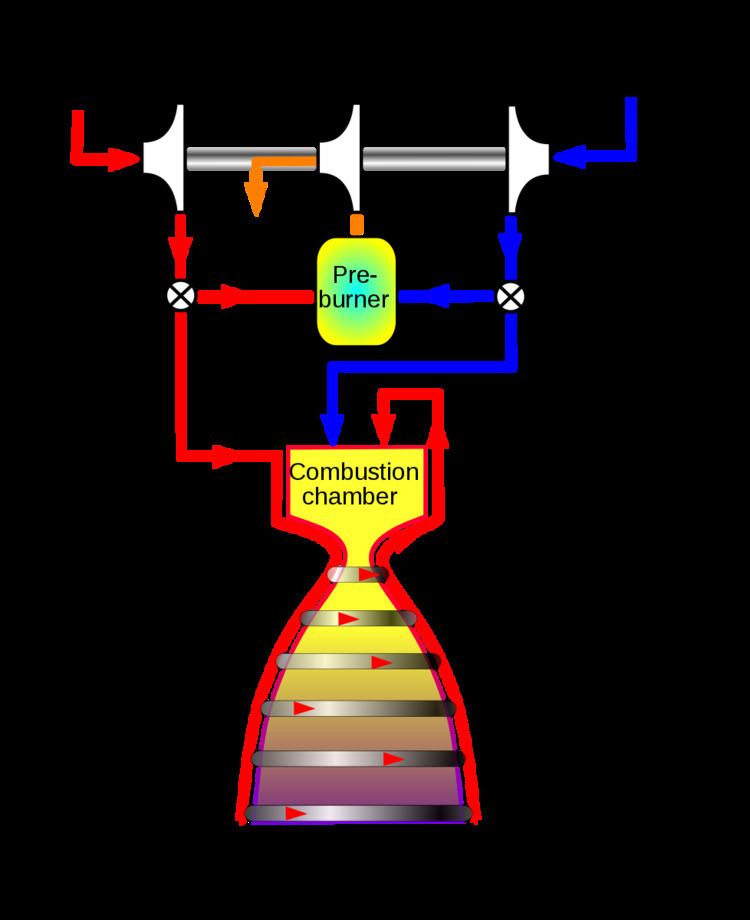 | ||
The gas-generator cycle is a power cycle of a bipropellant rocket engine. Some of the propellant is burned in a gas generator and the resulting hot gas is used to power the engine's pumps. The gas is then exhausted. Because something is "thrown away" this type of engine is also known as open cycle.
There are several advantages to the gas-generator cycle over its counterpart, the staged combustion cycle. The gas generator turbine does not need to deal with the counter pressure of injecting the exhaust into the combustion chamber. This simplifies plumbing and turbine design, and results in a less expensive and lighter engine.
The main disadvantage is lost efficiency due to discarded propellant. Gas-generator cycles tend to have lower specific impulse than staged combustion cycles.
As in most cryogenic rocket engines, some of the fuel in a gas-generator cycle may be used to cool the nozzle and combustion chamber (regenerative cooling). Available construction materials cannot withstand the extreme temperatures of rocket combustion processes by themselves, while cooling permits the use of rocket engines for relatively long burn times. Without any rocket combustion chamber and nozzle heat mitigation, the engine would fail catastrophically.
Usage
Gas-generator combustion engines include the following:
Rocket launch systems that use gas generator combustion engines:
